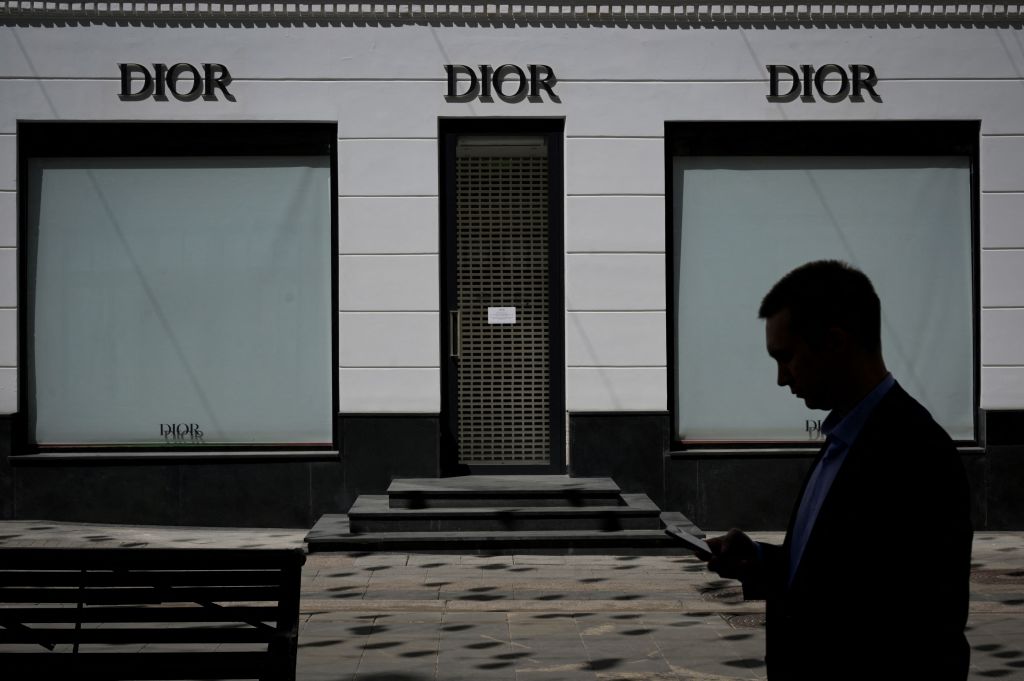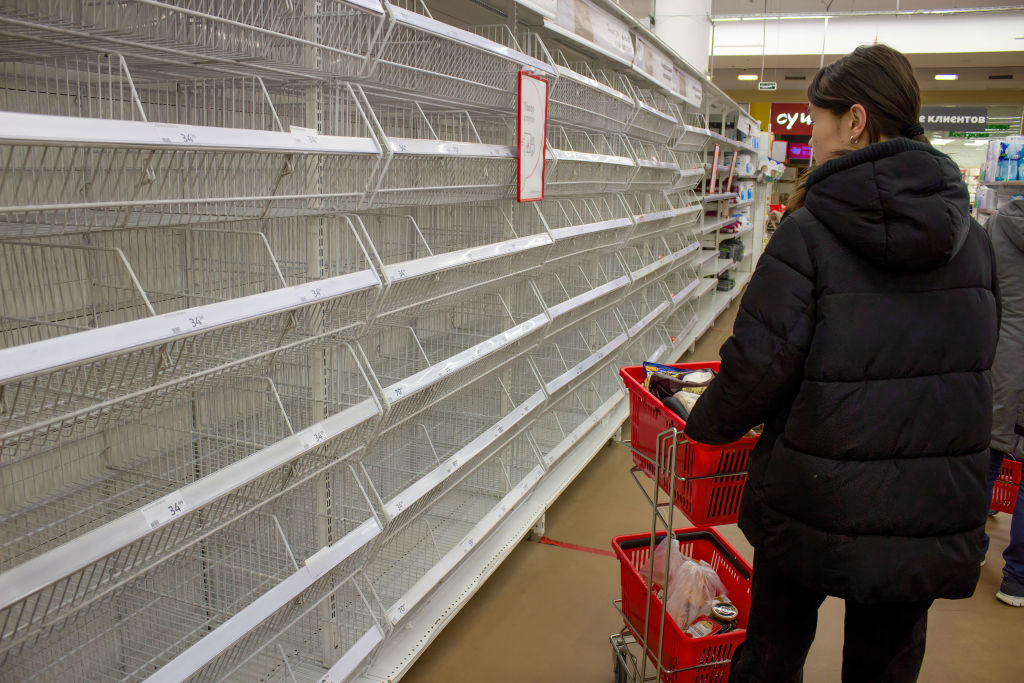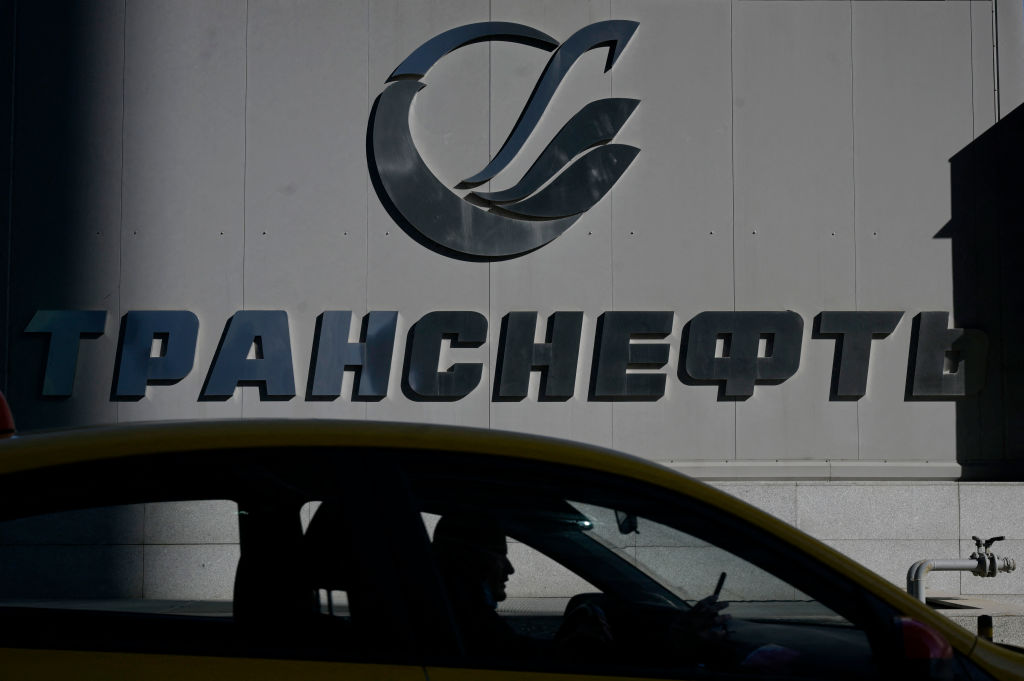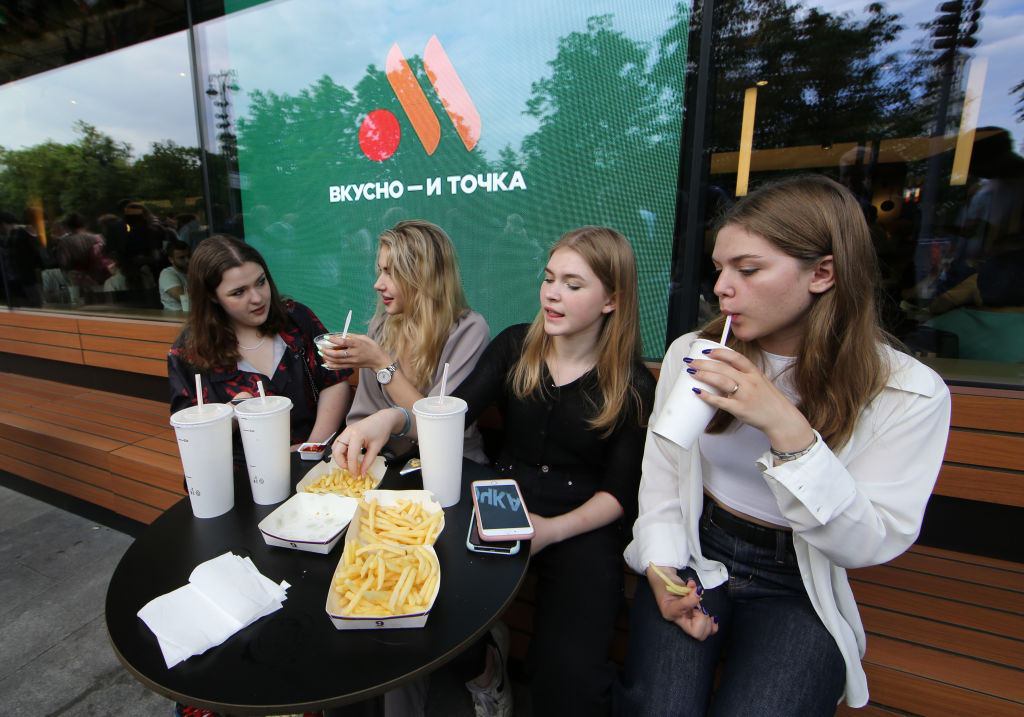
Russia may face a longer and deeper recession as the impact of U.S. and European sanctions spreads, handicapping sectors that the country has relied on for years to power its economy, according to an internal report prepared for the government.
The document, the result of months of work by officials and experts trying to assess the true impact of Russia’s economic isolation due to President Vladimir Putin’s invasion of Ukraine, paints a far more dire picture than officials usually do in their upbeat public pronouncements. Bloomberg viewed a copy of the report, drafted for a closed-door meeting of top officials on Aug. 30. People familiar with the deliberations confirmed its authenticity.
Two of the three scenarios in the report show the contraction accelerating next year, with the economy returning to the prewar level only at the end of the decade or later. The “inertial” one sees the economy bottoming out next year 8.3% below the 2021 level, while the “stress” scenario puts the low in 2024 at 11.9% under last year’s level.
Read More: The Debate Over Banning Russian Tourists Is Dividing Europe
All the scenarios see the pressure of sanctions intensifying, with more countries likely to join them. Europe’s sharp turn away from Russian oil and gas may also hit the Kremlin’s ability to supply its own market, the report said.
Beyond the restrictions themselves, which cover about a quarter of imports and exports, the report details how Russia now faces a “blockade” that “has affected practically all forms of transport,” further cutting off the country’s economy. Technological and financial curbs add to the pressure. The report estimates as many as 200,000 IT specialists may leave the country by 2025, the first official forecast of the widening brain drain.
Publicly, officials say the hit from sanctions has been less than feared, with the contraction possibly less than 3% this year and even less in 2023. Outside economists have also adjusted the outlooks for this year, backing off initial forecasts of a deep recession as the economy has held up better than expected.

A fall in Russian exports
The document calls for a raft of measures to support the economy and further ease the impact of the restrictions in order to get the economy recovering to pre-war levels in 2024 and growing steadily after that. But the steps include many of the same measures to stimulate investment that the government has touted over the last decade, when growth largely stagnated even without sanctions.
Asked about the Bloomberg report early Tuesday in Vladivostok, Economy Minister Maxim Reshetnikov called the forecasts “analytical estimates that we used to calculate what would happen if we don’t resist, don’t do anything,” according to Tass.
Read More: The Miscalculations That Led Putin to War in Ukraine
Over the next year or two, the report warns of “reduced production volumes in a range of export-oriented sectors,” from oil and gas to metals, chemicals and wood products. While some rebound is possible later, “these sectors will cease to be the drivers of the economy.”
A full cutoff of gas to Europe, Russia’s main export market, could cost as much as 400 billion rubles ($6.6 billion) a year in lost tax revenues, according to the report. It won’t be possible to fully compensate the lost sales with new export markets even in the medium term.

Russia’s oil sector hit
As a result, output will have to be reduced, threatening Kremlin goals for expanding domestic gas supplies, the report said. The lack of technology needed for liquefied natural gas plants is “critical” and may hamper efforts to build new ones.
Europe’s plans to stop importing Russian oil products — about 55% of exports went there last year — could trigger sharp cuts in production leaving the domestic market short of fuel, as well.
Metals producers are losing $5.7 billion a year from the restrictions, the report said.
Read More: How One Company Is Finding Exiting Russia Very Complicated
If the world economy slips into recession, the report warns, Russia could see exports cut further as it becomes the “swing supplier” on global markets, with demand for its products disappearing first. That could trigger a plunge in the ruble and a spike in inflation.
On the import side, “the main short-term risk is the suspension of production due to lack of imported raw materials and components.” Over the longer term, the inability to repair imported equipment could permanently limit growth, the report said.

Critical Imports run out
“There are simply no alternative suppliers for some critical imports,” it said.
Even in the farm sector, where the Kremlin has touted its efforts at replacing foreign supplies, dependence on key inputs could force Russians to reduce their food consumption as supplies dwindle, according to the report.
Restrictions on access to western technology may push Russia a generation or two behind current standards as it’s forced to rely on less advanced alternatives from China and Southeast Asia.
Read More: For Putin, It’s All About the Money
The report warns that sanctions will also force the government to revise a range of the development targets that Putin had set before the war, including those for boosting population growth and life expectancy.
On a sectoral basis, the report details the breadth of the hit from sanctions:
More Must-Reads from TIME
- Donald Trump Is TIME's 2024 Person of the Year
- Why We Chose Trump as Person of the Year
- Is Intermittent Fasting Good or Bad for You?
- The 100 Must-Read Books of 2024
- The 20 Best Christmas TV Episodes
- Column: If Optimism Feels Ridiculous Now, Try Hope
- The Future of Climate Action Is Trade Policy
- Merle Bombardieri Is Helping People Make the Baby Decision
Contact us at letters@time.com